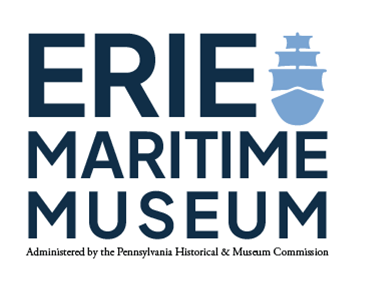“Mary Irwin, Proprietor”
Mary Pattison was born in Cookstown, County Tyrone, Northern Ireland in 1754 [1] and came to America as the second wife of Revolutionary War hero John Irwin. After making their home in Philadelphia, and then Chester, they arrived in Pittsburgh in 1787, and established their rope walk there in 1794 [2]. History seldom recognizes the role women played as full partners in early American businesses. Mary Irwin certainly had no small role in the establishment and management of the rope walk, as the lingering effects of John's war wounds alone would have made it physically difficult for him to supervise day to day operations. Their business was initially listed as "John Irwin & Wife", [3] acknowledging their partnership. After John's death in 1808 she continued to run the business herself.
Mary's keen, competitive mind for business is reflected in her 1808 notice, published in the Pittsburgh Weekly Gazette. She not only advertises product pricing and offers quantity purchase discounts, but she also carries other supplies that her cordage customers are likely to need, such as nails. Note that she is listed as sole proprietor in 1808, [4] but she later conducted business as Mary Irwin & Son, bringing her elder son John into the business as he came of age.
Pittsburgh Weekly Gazette, December 7, 1808
The keel boat used to carry supplies for the Lewis and Clark expedition was built in July and August, 1803, in Pittsburgh [5]. As the Irwin establishment was the only rope walk in Pittsburgh at the time, [6] it's fair to surmise that the Irwin’s supplied the rope used in that vessel, although unverifiable as those particular expedition records no longer exist.
It is a future government contract, however, that brought Mary Irwin's rope walk into historical prominence. Mary was nearly sixty years old when she and son John wrote to Daniel Dobbins in December of 1812, asking for the contract to provide rope for rigging the ships for Oliver Hazard Perry's squadron, then being built at Erie. Writing again in January of 1813, they again requested the contract, quoted pricing for cordage of various sizes and noted that the war was driving up costs, [7] a nice way of letting Dobbins know this pricing could not be guaranteed for long. The contract was not secured, however, until April. [8]
The map of early Pittsburgh below shows the locations of the Irwin rope walks over the years. [9] The business moved for growth and expansion. The rope walk was relocated in 1812 to the bank of the Allegheny River (#3) when Mary oversaw the manufacture of rope for Perry. [10]
William Darlington's map from Fort Pitt and Letters from the Frontier, with the Irwin rope walk locations noted, courtesy Gloria Forouzan
Mary sold her interest in the rope walk to her son John, and retired to private life [11] some time after the contract for Perry's rope was completed. She was over 70 when she died in 1826. [12] What we know of her is gleaned primarily from biographies written about her husband and son. So how was Mary remembered in death? She certainly did not receive a memorial worthy of her achievements in life!
Photo courtesy Laurie Large, from Find A Grave
Her husband John's monument honors his Revolutionary War service.
Photo courtesy Richard Boyer, from Find A Grave
Her son John has a monument worthy of the prominent citizen of Pittsburgh he ultimately became, as first Burgess of Allegheny and owner of the rope walk he initially held in partnership with his mother. [13]
Photo courtesy Gloria Forouzan
Mary Irwin's marker is easy to overlook, as it's about the size of a cell phone. The idea of a historic marker honoring Mary Irwin at the site of the rope walk in 1812 has been discussed, and we can hope that this idea becomes reality in the near future.
[1] Find A Grave memorial for Mary Irwin: https://www.findagrave.com/memorial/153292892/mary-irwin
[2] John E. Parke, Recollections of Seventy Years and Historical Gleanings of Allegheny, Pennsylvania, Boston: Rand, Avery & Company, 1886, pages 194-196, retrieved from https://www.google.com/books/edition/Recollections_of_Seventy_Years_and_Histo/5a4-AAAAYAAJ?hl=en&gbpv=1&dq=John+E.+Parke,+Recollections+of+Seventy+Years+and+Historical+Gleanings+of+Allegheny,+Pennsylvania,+Boston:++Rand,+Avery+%26+Company&pg=PR1&printsec=frontcover
[3] Parke, page 329.
[4] Pittsburgh Weekly Gazette, December 7, 1808.
[5] Gary E. Moulton, ed. The Journals of the Lewis and Clark Expedition. Lincoln: University of Nebraska Press, Volume One, Atlas, and Volume 2, August 30, 1803- August 24, 1804. Retrieved from https://lewisandclarkjournals.unl.edu/item/lc.jrn.1803-08-30 on March 10, 2021.
[6] Parke, page 194.
[7] Mary and John Irwin to Daniel Dobbins, January 21, 1813, as cited in Max Rosenberg, The Building of Perry's Fleet on Lake Erie, 1812-1813, (Third Printing), page 40. Harrisburg: Pennsylvania Historical & Museum Commission, 1974.
[8] Max Rosenberg, page 40.
[9] William Darlington's map from Fort Pitt and Letters from the Frontier, overlay courtesy of Mary Irwin historian Gloria Forouzan.
[10] Parke, page 194.
[11] Parke, page 329.
[12] Find A Grave Memorial for Mary Irwin.
[13] Parke, pages 328 - 330.






